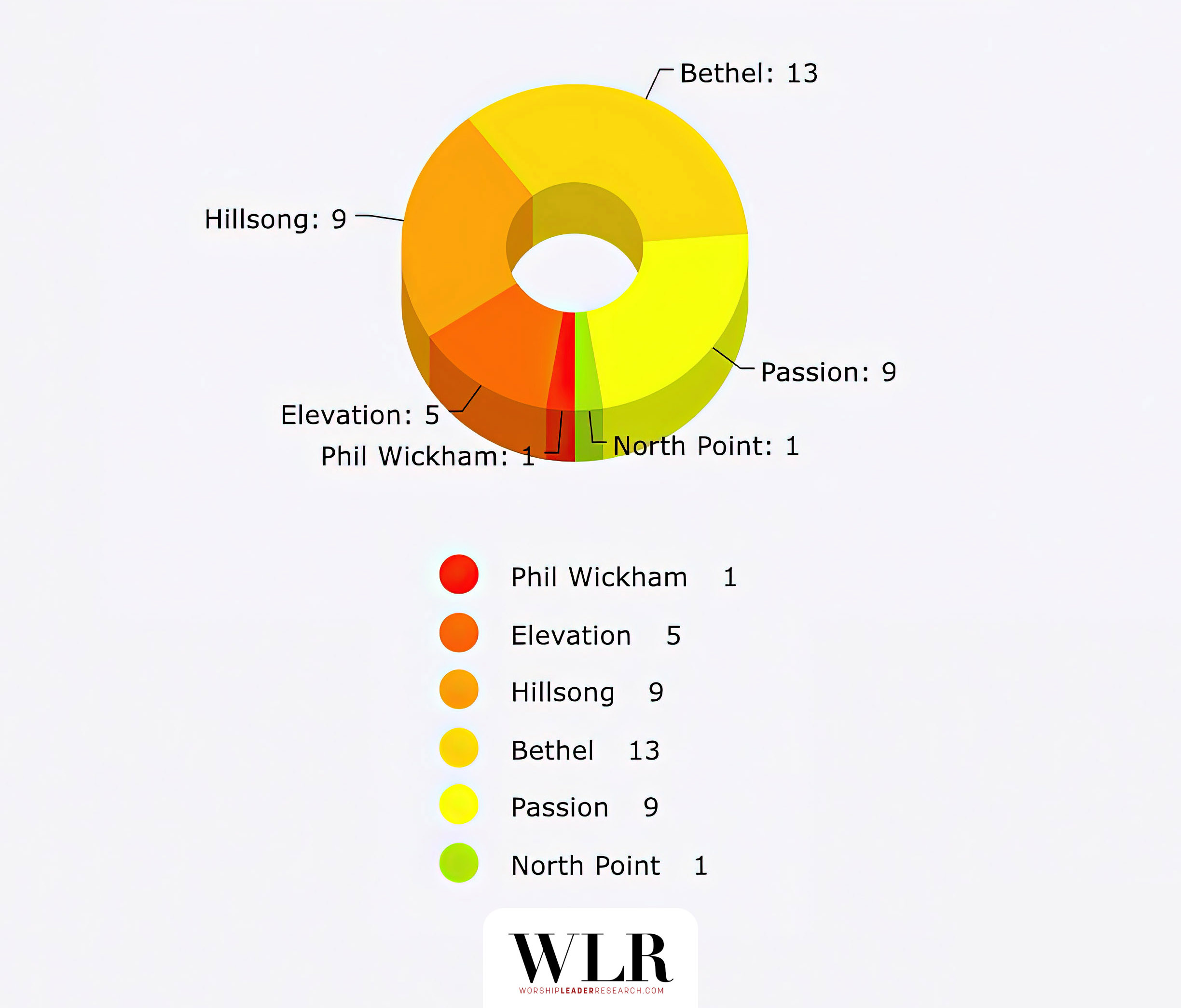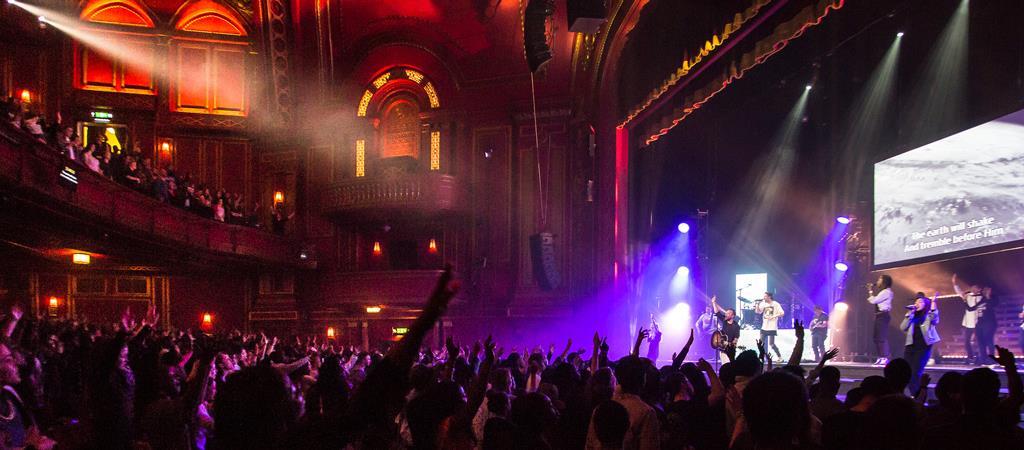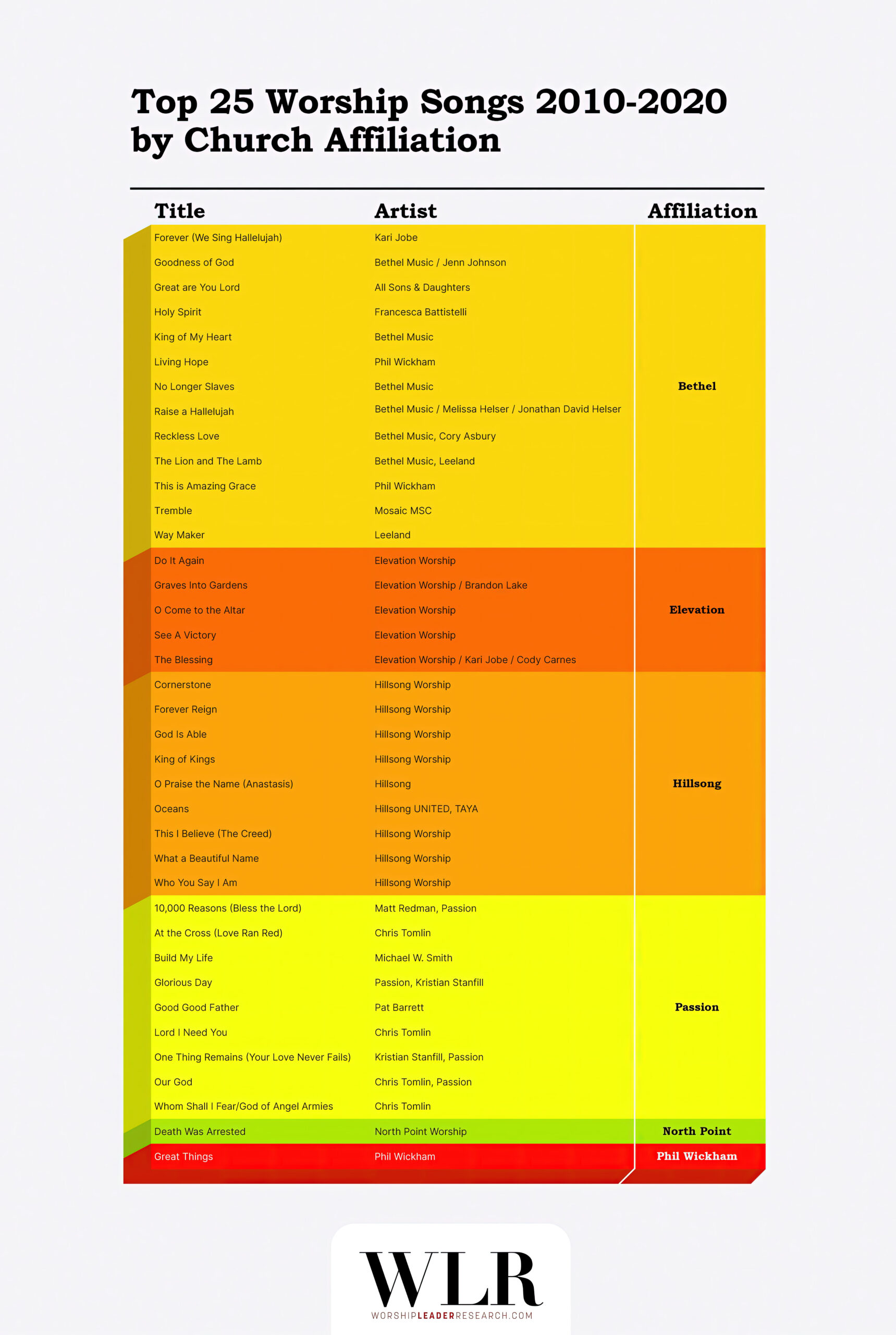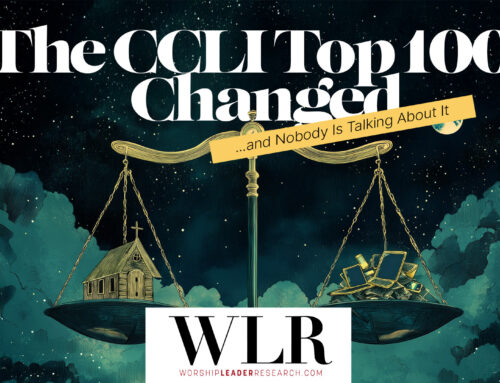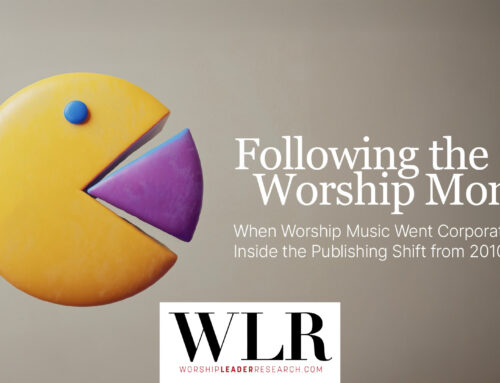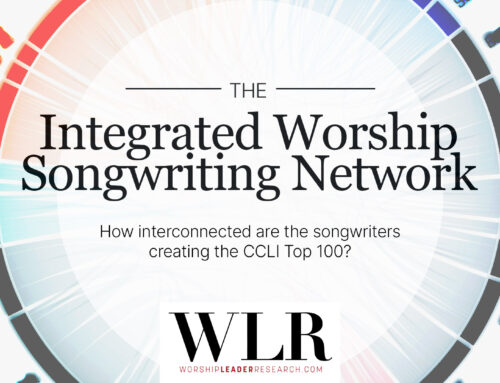From 2010-2020, 38 worship songs appeared on the CCLI and PraiseCharts Top 25 list. 37 of them were co-written or popularized by a mere 5 megachurches.
If you have ever felt like most worship music sounds the same, it may be because the worship music you are most likely to hear in many churches is written by just a handful of songwriters from a handful of churches.
As part of our group’s analysis of contemporary worship music output (for details on our study’s methodology, click here), we delved deeply into the most popular worship songs released between 2010 and 2020. We cross-referenced two main sets of data: the ever-popular CCLI lists – viewed much like the “Billboard charts of church music” – and the Praise Charts top songs lists, where churches might purchase chord charts and arrangements.
After cross-referencing the Top 100 lists from each, we found that there were only 114 songs associated with just 43 discrete songwriters or churches. However, reporting on the Top 100 says much less about the impact these songs may have on the church than it might seem at first glance. It has become clear that music revenues earned tend to concentrate in a very small group of contributors. This is true in almost all genres of music. In fact, Mark Mulligan of Midia Consulting indicates that the top 1 percent of artists account for approximately 77% – 80% of all music revenues. Thus, in order to correlate the greatest possible amount of data and create the most accurate picture of what it feels like to sing songs in churches, we narrowed our lists to focus on the Top 25.
When we did, we found there to be a mere 38 songs. That’s right, in a decade, only 38 titles were among the Top 25 songs sung in churches. Even on the surface, most of these songs are directly traceable to four church groups (Bethel, Hillsong, Elevation, and Passion) and a handful of other artists. Click here to see the list.
Chart: Top 25 Songs by Artist (Summarized)
At first glance, 14 contributors appear to have been responsible for the Top 25 songs in worship music.
Chart: Top 25 Songs by Artist (Summarized)
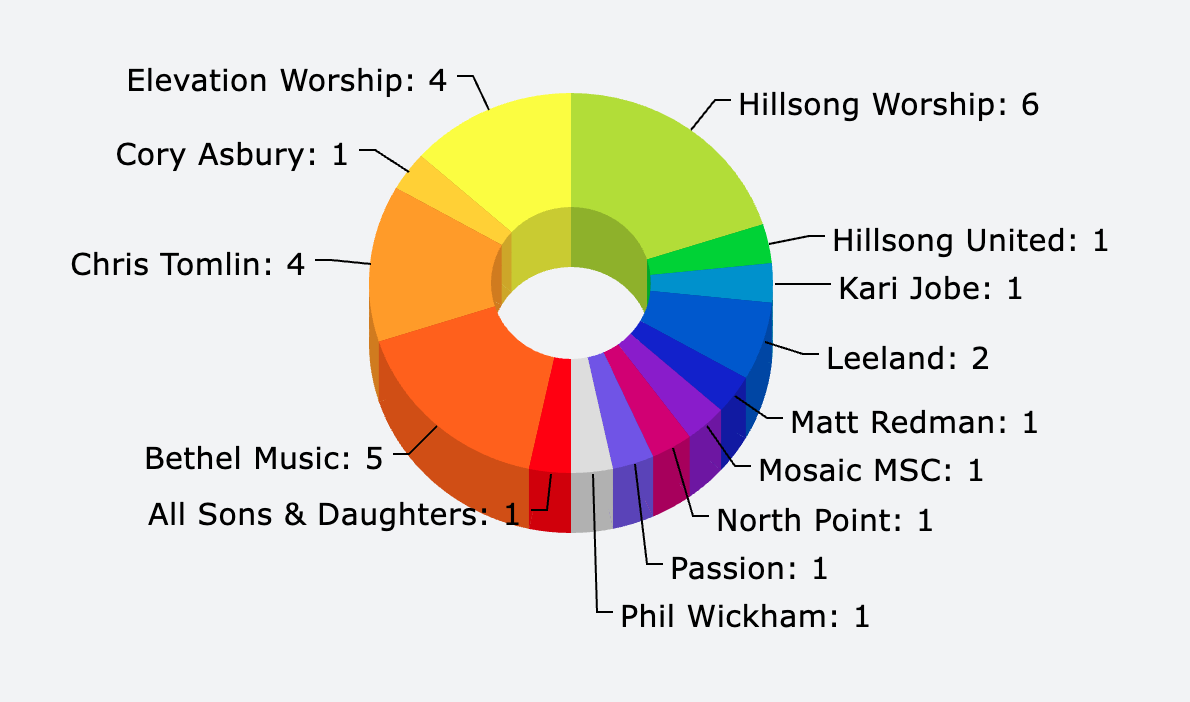
At first glance, 14 contributors appear to have been responsible for the Top 25 songs in worship music.
Acknowledging the past and present affiliations of individuals such as Chris Tomlin and Matt Redman with Passion (as signed songwriters and regular contributors) and Jesus Culture (as the former youth band), and Leeland (as a collective member) with Bethel, it is clear that 35 of the 38 songs have a direct connection to these four megachurch entities. “Death Was Arrested” emerged from North Point Community Church, an Atlanta-based megachurch with campuses and a network of affiliate churches throughout North America that attracts roughly 40,000 attendees per weekend and likely wields influence that exceeds these impressive figures. The remaining songs, such as Kari Jobe’s “Forever,” Mosaic MSC’s “Tremble,” and “Great Are You Lord” by All Sons & Daughters, have unique stories of being popularized by either Bethel or Passion. In each case, the song was performed at a large conference, published on YouTube, or used during live-streamed Sunday services before breaking through the charts. For instance, “Great Are You Lord” was released in 2013 but featured in several of Bethel’s live-streamed Sunday services in July of 2014, becoming a staple on their YouTube channel. It did not appear on the CCLI charts until July of 2015. Similar events took place for almost every other song, with the exception of “Great Things” by Phil Wickham, which has no direct connection to these five megachurches. Nonetheless, Bethel Music’s successful collaborations with Wickham preceded the song’s release.
You may be wondering, “So what?”
As Gordon D Fee once said, “Show me a church’s songs and I’ll show you their theology.” Although we cannot yet draw conclusions regarding the theological impact of this concentration of influence on the church, it appears clear that a few megachurches and a small number of affiliated artists have come to shape the song repertoire of a broad swath of Christian congregations.
This also confirms the anecdotal fears of many local church songwriters. It seems a song written and created without the eventual support of these specific churches, would not easily gain widespread popularity in the industry and, by extension, the church.
Thus far, we have only examined the relationship between song reporting and the people who dominate that space, the “industry.” But what about the Church?
In Phase Two of our research, we collected a sample of over 400 worship leaders representing a wide range of denominations and church styles. This research focused on their attitudes toward various song sources, their use of charts and services to navigate the volume of song releases, and other topics. We look forward to exploring how these datasets might impact one another and will share them here and elsewhere over the next year.
In the meantime, what questions does this raise for you? How would you like to see this data explored? What does this mean for you or your church?
Chart: Top 25 Songs by Affiliation
After accounting for collaborations, performance history, and popularization, only six groups were responsible for the popularity of the Top 25 songs in worship music.
Chart: Top 25 Songs by Affiliation
